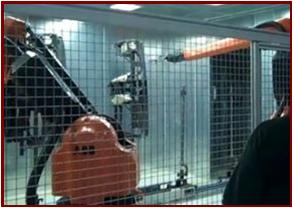
A water-borne coupling agent goes into the surface via vaporization of a nitrogen based coupling agent through the center of a gas burner.
General Motors is introducing a paint process it calls a flame treatment technology that lets paint adhere to plastic vehicle parts without using primers that contain emission causing solvents. GM says it improves efficiency since it’s faster than spraying primer, and the capital expense pays for itself in less than four months. It’s currently being used on the Chevrolet Cruze, Sonic, and Volt.
Emissions from the painting of automobiles have been steadily decreasing under environmental laws as a variety of paint process technologies including water based paints and other new materials that eliminate volatile organic compounds (VOCs) and other emissions, electric coating methods and the now the almost exclusive use of robots to precisely spray coatings have become standard.
GM is committed to reducing emissions throughout its manufacturing operations and supply chain, so it manages traditional solvents through recycling, conversion to energy and superheating the gases to break them down. However, these are energy-consuming, costly processes.
This flame treatment technology from supplier FTS instead uses an energy-efficient, robotic system to create a molecular change to the surface of the plastic, making it bond with the paint. The process eliminates the need for an adhesion-promoting primer.
The new process on the Cruze reduced solid and liquid waste (filters, cleaners, solvents and coatings) from 48 tons a year to less than one, while decreasing air pollutants from 810 tons a year to 80 tons a year. It also eliminated landfill waste like paint sludge and painted scrap material from 25 tons to nearly zero.

